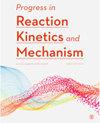Understanding the rate-limiting step adsorption kinetics onto biomaterials for mechanism adsorption control
IF 4.8
4区 化学
Q3 CHEMISTRY, PHYSICAL
引用次数: 0
Abstract
Biomaterials are a class of porous materials that have been widely exploited over the past two decades. However, the implications of controlling adsorption by rate-limiting steps are still not adequately established. Identifying the rate-limiting step is a promising approach for the design of adsorption systems. In this review, we study in detail the rate-limiting step of the adsorption of dyes in aqueous media on biomaterials to rationalize the factors governing the rate-limiting step involved in the adsorption process using empirical kinetics and mass transfer models. This knowledge is then applied to identify the best fit of these models to study the rate-controlling step involved in the adsorption process, which is crucial for the design of the adsorption system. This review first studies the limiting step of adsorption of dyes in an aqueous medium on biomaterials. Kinetic modeling is used to better understand the rate control step involved in biosorption. Generally, the equations used are empirical models of kinetics and mass transfer and the biomaterials come from the following categories: agricultural and industrial waste, algae, fungi, bacteria, and plants. In most adsorption studies reported in this review, the pseudo second-order model was found to be best suited for fitting the kinetic data of dyes on biomaterials, indicating that chemisorption is the rate-limiting step that controls adsorption. Concerning the diffusion effects of mass transfer, intraparticle diffusion is among the most often used models to examine the rate-limiting step which is controlled by both film diffusion and intraparticle diffusion. The first takes place when the external transfer is greater than the internal transfer while the opposite occurs in the case of porous diffusion. However, the majority of works do not study the real step of controlling the overall adsorption kinetics, namely, film diffusion or intraparticle diffusion.了解生物材料的限速吸附动力学,实现机制吸附控制
生物材料是一类多孔材料,在过去二十年中得到了广泛应用。然而,通过限速步骤控制吸附的意义仍未充分确定。确定限速步骤是设计吸附系统的一种可行方法。在这篇综述中,我们详细研究了水介质中染料在生物材料上吸附的限速步骤,利用经验动力学和传质模型合理解释了吸附过程中涉及的限速步骤的制约因素。然后应用这些知识来确定这些模型的最佳拟合度,以研究吸附过程中的速率控制步骤,这对吸附系统的设计至关重要。本综述首先研究了水介质中染料在生物材料上吸附的限制步骤。动力学模型用于更好地理解生物吸附过程中的速率控制步骤。一般来说,所使用的方程是动力学和传质的经验模型,生物材料有以下几类:农业和工业废物、藻类、真菌、细菌和植物。在本综述报告的大多数吸附研究中,发现伪二阶模型最适合拟合染料在生物材料上的动力学数据,这表明化学吸附是控制吸附的限速步骤。关于质量转移的扩散效应,颗粒内扩散是最常用的模型之一,用于研究受膜扩散和颗粒内扩散控制的限速步骤。前者发生在外部传质大于内部传质的情况下,而在多孔扩散的情况下则相反。然而,大多数研究都没有研究控制整个吸附动力学的真正步骤,即膜扩散或颗粒内扩散。
本文章由计算机程序翻译,如有差异,请以英文原文为准。
求助全文
约1分钟内获得全文
求助全文
来源期刊
CiteScore
2.10
自引率
0.00%
发文量
5
审稿时长
2.3 months
期刊介绍:
The journal covers the fields of kinetics and mechanisms of chemical processes in the gas phase and solution of both simple and complex systems.

 求助内容:
求助内容: 应助结果提醒方式:
应助结果提醒方式:


